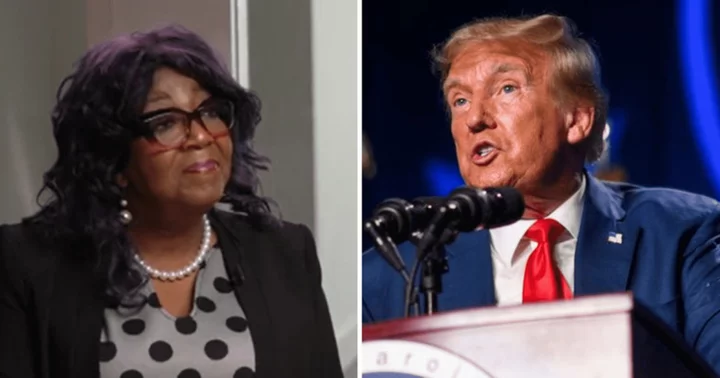It was Saturday, February 22, 1997, and British researchers Ian Wilmut and Keith Campbell were expecting a final moment of calm before the results of their unprecedented scientific experiment were announced to the world.
The team had kept the breakthrough under wraps for seven months while they waited for their paper to be published in the prestigious journal Nature. Confidential press releases had gone out to journalists with the strict instruction not to leak the news before February 27.
But that night, the team was tipped off that journalist Robin McKie was going to break the story the very next day in the British newspaper The Observer.
Wilmut and Campbell raced to the lab at the Roslin Institute on Sunday morning as McKie’s story hit the media like a thunderbolt. International news outlets had already started swarming at the institute for access to Wilmut and Campbell’s creation: Dolly the sheep, the world’s first mammal successfully cloned from a single adult cell. Shielded from the general public, she stuck her nose through the fence and munched calmly on the hay in her pen, unperturbed by the horde of news photographers. Dolly, a woolly, bleating scientific miracle, looked much like other sheep, but with a remarkable genetic difference.
By the end of that Sunday, February 23, nearly every major newspaper in the world carried headlines about Dolly the sheep.
A Long-Awaited Breakthrough
Born on July 5, 1996, Dolly was cloned by Wilmut and Campbell’s team at the Roslin Institute, a part of the University of Edinburgh, and Scottish biotechnology company PPL Therapeutics. The scientists cloned Dolly by inserting DNA from a single sheep mammary gland cell into an egg of another sheep, and then implanting it into a surrogate mother sheep. Dolly thus had three mothers—one that provided the DNA from the cell, the second that provided the egg, and the third that carried the cloned embryo to term. Technically, though, Dolly was an exact genetic replica of only the sheep from which the cell was taken.
Following the announcement, the Roslin Institute received 3000 phone calls from around the world. Dolly’s birth was heralded as one of the most important scientific advances of the decade.
But Dolly wasn’t science’s first attempt at cloning. Researchers had been exploring the intricacies of cloning for almost a century. In 1902, German embryologists Hans Spemann and Hilda Mangold, his student, successfully grew two salamanders from a single embryo split with a noose made up of a strand of hair. Since then, cloning experiments continued to become more sophisticated and nuanced. Several laboratory animal clones, including frogs and cows, were created before Dolly. But all of them had been cloned from embryos. Dolly was the first mammal to be cloned from a specialized adult cell.
Embryonic stem cells, which form right after fertilization, can turn into any kind of cell in the body. After they modify into specific types of cells, like neurons or blood cells, they’re call specialized cells. Since the cell that gave rise to Dolly was already specialized for its role as a mammary gland cell, most scientists thought it would be impossible to clone anything from it but other mammary gland cells. Dolly proved them wrong.
A Worldwide Reaction—And Controversy
Many scientists in the ’90s were flabbergasted. Dolly’s advent showed that specialized cells could be used to create an exact replica of the animal they came from. “It means all science fiction is true,” biology professor Lee Silver of Princeton University told The New York Times in 1997.
The Washington Post reported that “Dolly, depending on which commentator you read, is the biggest story of the year, the decade, even the century. Wilmut has seen himself compared with Galileo, with Copernicus, with Einstein, and at least once with Dr. Frankenstein.”
Scientists, lawmakers, and the public quickly imagined a future shaped by unethical human cloning. President Bill Clinton called for review of the bioethics of cloning and proposed legislation that would ban cloning meant “for the purposes of creating a child” (it didn’t pass). The World Health Organization concluded that human cloning was “ethically unacceptable and contrary to human integrity and morality” [PDF]. A Vatican newspaper editorial urged governments to bar human cloning, saying every human has “the right to be born in a human way and not in a laboratory.”
Meanwhile, some scientists remained unconvinced about the authenticity of Wilmut and Campbell’s experiment. Norton Zinder, a molecular genetics professor at Rockefeller University, called the study published in Nature “a bad paper” because Dolly’s genetic ancestry was not conclusive without testing her mitochondria—DNA that is passed down through mothers. That would have confirmed whether Dolly was the daughter of the sheep that gave birth to her. In The New York Times, Zinder called the Scottish pair’s work “just lousy science, incomplete science.” But NIH director Harold Varmus told the Times that he had no doubt that Dolly was a clone of an adult sheep.
Dollymania!
Because she was cloned from a mammary gland cell, Dolly was named—dad joke alert—after buxom country music superstar Dolly Parton. (Parton didn’t mind the attribution.) Like her namesake, Dolly the sheep was a bona fide celebrity: She posed for magazines, including People; became the subject of books, journal articles, and editorials; had an opera written about her; starred in commercials; and served as a metaphor in an electoral campaign.
And that wasn’t all: New York Times reporter Gina Kolata, one of the first journalists to give readers an in-depth look at Dolly, wrote Clone: The Road to Dolly, and the Path Ahead and contrasted the animal’s creation with the archetypes in Frankenstein and The Island of Dr. Moreau. American composer Steve Reich was so affected by Dolly’s story that he featured it in Three Tales, a video-opera exploring the dangers of technology.
The sheep also became an inadvertent political player when the Scottish National Party used her image on posters to suggest that candidates of other parties were all clones of one another. Appliance manufacturer Zanussi used her likeness for a poster with her name and the provocative caption “The Misappliance of Science” (the poster was later withdrawn after scientists complained). In fact, so widespread was the (mis)use of her name that her makers eventually trademarked it to stop the practice.
Dolly’s Legacy
Following Dolly, many larger mammals were cloned, including horses and bulls. Roslin Biomed, set up by the Roslin Institute to focus on cloning technology, was later sold to the U.S.-based Geron Corporation, which combined cloning technology with stem cell research. But despite her popularity—and widespread fear— Dolly’s birth didn’t lead to an explosion in cloning: Human cloning was deemed too dangerous and unethical, while animal cloning was only minimally useful for agricultural purposes. The sheep’s real legacy is considered to be the advancement in stem cell research.
Dolly’s existence showed it was possible to change one cell’s gene expression by swapping its nucleus for another. Stem cell biologist Shinya Yamanaka told Scientific American that Dolly’s cloning motivated him to successfully develop stem cells from adult cells. He later won a Nobel Prize for his results, called induced pluripotent stem cells (iPS) because they’re artificially created and can have a variety of uses. They reduced the need for embryonic stem cells in research, and today, iPS cells form the basis for most stem cell research and therapies, including regenerative medicine.
Dolly had six offspring, and led a productive, sociable life with many human fans coming to visit her. In 2003, a veterinary examination showed that Dolly had a progressive lung disease, and she was put down. But four clones created from the same cell line in 2007 faced no such health issues and aged normally.
Dolly is still a spectacle, though, nearly 25 years after her creation: Her body was taxidermied and put on display at the National Museum of Scotland in Edinburgh.
A version of this article was published in 2020; it has been updated for 2023.
This article was originally published on www.mentalfloss.com as Dollymania: When Dolly the Sheep Created a ’90s Media Sensation.









